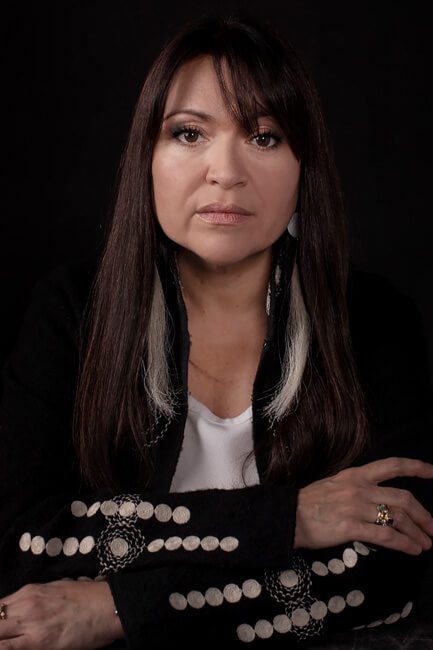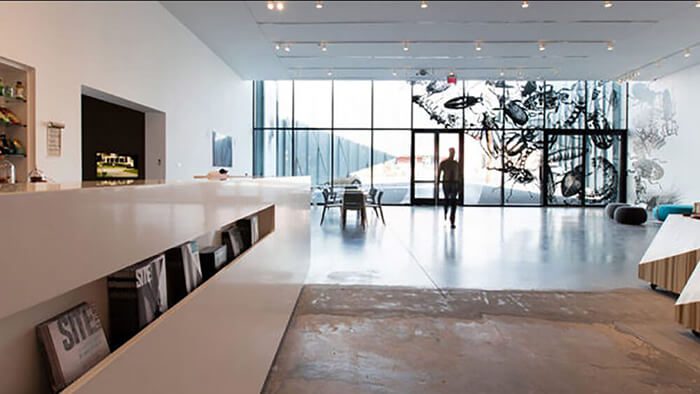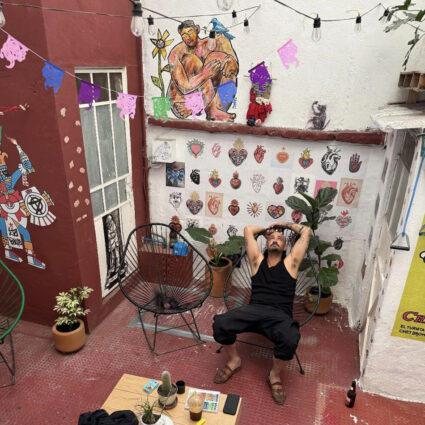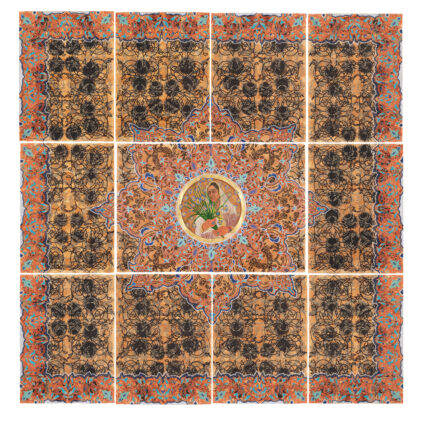Danyelle Means, Center for Contemporary Arts Santa Fe’s first Indigenous executive director, and Louis Grachos, who returns to SITE Santa Fe as executive director, emphasize community collaboration and equity.

ALBUQUERQUE, NM—Two prominent New Mexico arts organizations recently hired new leaders who are stressing collaboration and diversity in Santa Fe and beyond.
In the past month, Danyelle Means (Oglala Lakota) became the first Indigenous executive director of the Center for Contemporary Arts Santa Fe, and Louis Grachos started as the new executive director of SITE Santa Fe.
Both Grachos, who began on June 22, and Means, who assumed her leadership position on July 12, come from accomplished backgrounds.
Means is a former director of advancement at Santa Fe’s Institute of American Indian Arts (IAIA) and executive director of the IAIA Foundation. Her expertise in contemporary Native American art includes managing multiple exhibitions at Smithsonian Institution’s National Museum of the American Indian (NMAI) in New York.
Grachos previously served as SITE’s first executive director from 1996 to 2003. He brings thirty years of experience back to Santa Fe, which includes leading The Contemporary Austin as its executive director and CEO, and a two-year stint helming the Palm Springs Art Museum.

Means, who was raised on the Rosebud Indian Reservation in South Dakota, will lead CCA’s re-tooled approach that includes community collaborations across the arts, humanities, and sciences.
“Part of the mission is to recombine the humanities and sciences into visual arts because we’ve separated them out,” says Means. “So much of what contemporary artists are thinking and doing these days really has to do with their surroundings, whether it’s water issues, environmental justice, or social justice.”
She’s also working with Peter Grendle, CCA’s recently appointed cinema director and former Violet Crown Cinema manager, in a phased reopening of the space’s art gallery and cinema house, scheduled to begin in late July.
“We want to create a sense of community moving forward, but in a smart and financially viable way,” says Means, who adds that CCA, which was absent an official executive director since Stuart Ashman departed in 2018, “took a big hit” from pandemic closures.
SITE Santa Fe chose Grachos, who was raised in Toronto, to develop new creative partnerships.

“At its heart, SITE Santa Fe is a program that works directly with artists and curators. There’s an intimacy to the scale of the operation that I love when interacting with the team and with visiting artists as you organize exhibitions,” says Grachos about SITE, which opened in 1995. “It has remained an artist-centric organization and that’s something I really admire.”
Means and Grachos say they’re committed to diversity in their respective leadership positions.
CCA’s Means, a recipient of a Shine Award from the Women of Color in Fundraising and Philanthropy, says that her contemporary Native American art background led her to “strip away all of the boxes and pigeonholes.”
“For me, I’m wanting to share really creative humans with the world, whether they’re Native American, Japanese-American, or international Indigenous people,” Means says. “It’s highlighting the work of artists who need to be seen and interacted with.”
Grachos, executive director of Buffalo’s Albright-Knox Art Gallery from 2003 to 2012, says finalizing and implementing SITE’s diversity, equity, accessibility, and inclusion plan, which the contemporary art venue introduced last year, is a top priority.
“This staff has been working very hard on the commitment to diversity and equity,” Grachos explains. “Everything from how we hire staff, how we make decisions about exhibitions, and how we allow and grow professional opportunities through not just our workplace, but also our internship programs and our engagement programs with the community.”
“It’s about refocusing your values as an organization,” says Grachos. “That’s something this team has really embraced and we’re working on that as we speak.”



